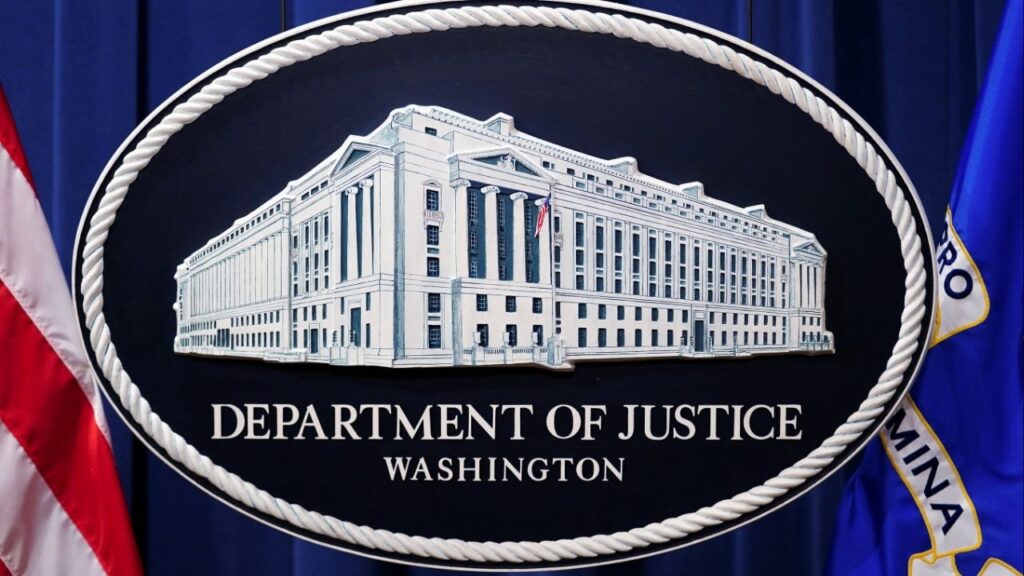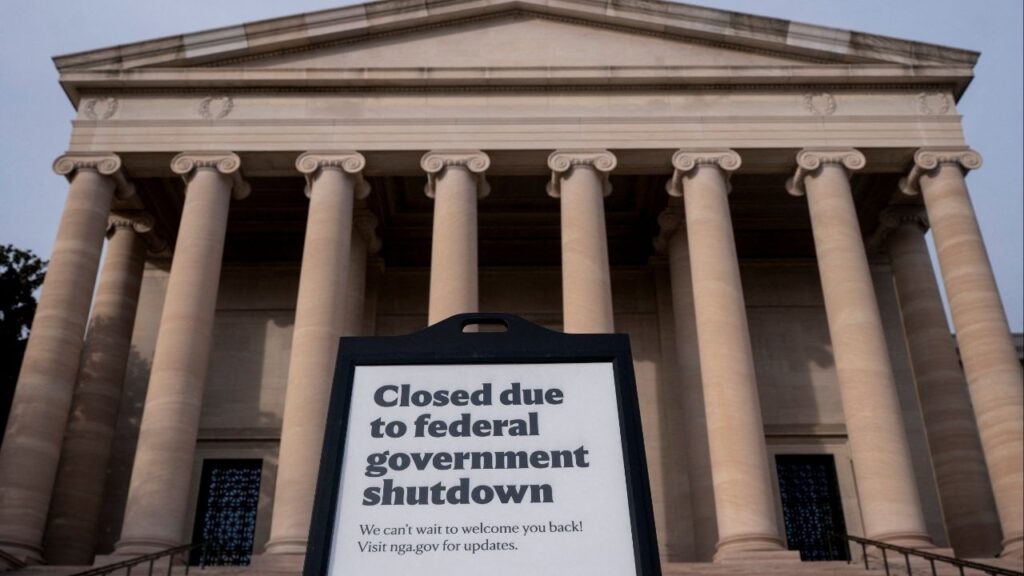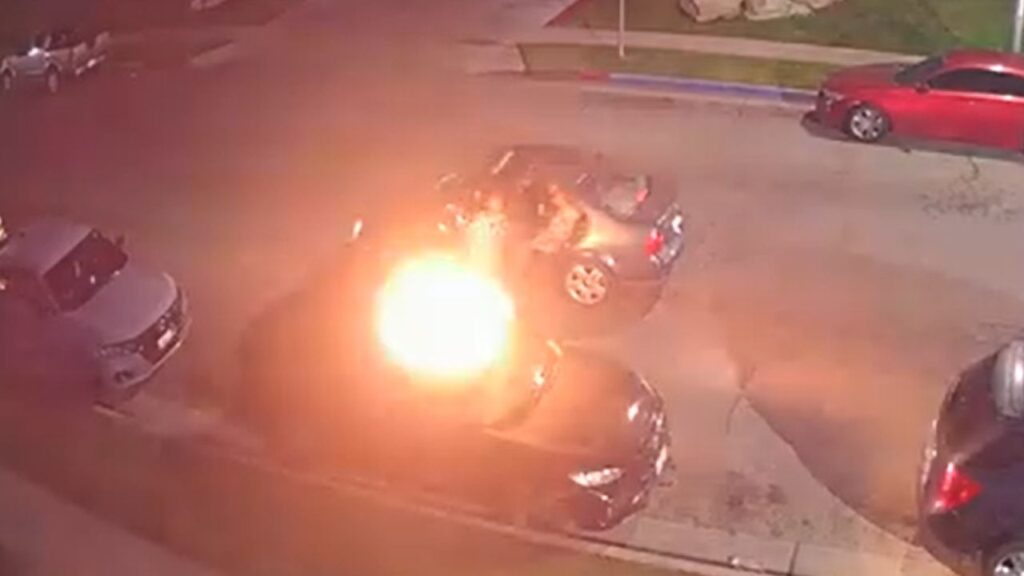An illustrative image of marijuana plant buds, joints and edibles, in New York, Oct. 4, 2024. Cannabis, now legal in much of the country, is commonly thought of as nonaddictive and safe — but for some users, these assumptions are dangerously wrong. (Sonny Figueroa/The New York Times)

- Doctors report rising cases of severe nausea, vomiting, and psychosis linked to high-potency cannabis products in legalized states.
- About 18 million Americans show symptoms of cannabis use disorder, with 3 million considered addicted, per Columbia University analysis.
- Researchers urge better public health messaging as more users face severe side effects from today's highly potent cannabis products.
Share
|
Getting your Trinity Audio player ready...
|
In midcoast Maine, a pediatrician sees teenagers so dependent on cannabis that they consume it practically all day, every day — “a remarkably scary amount,” she said.
From Washington state to West Virginia, psychiatrists treat rising numbers of people whose use of the drug has brought on delusions, paranoia and other symptoms of psychosis.
And in the emergency departments of small community hospitals and large academic medical centers alike, physicians encounter patients with severe vomiting induced by the drug — a potentially devastating condition that once was rare but now, they say, is common.
Related Story: US Health Authorities Need to Play a Larger Role in Cannabis Policy, a New ...
As Legalization Rises, Doctors Contend with the Effects
As marijuana legalization has accelerated across the country, doctors are contending with the effects of an explosion in the use of the drug and its intensity. A $33 billion industry has taken root, turning out an ever-expanding range of cannabis products so intoxicating, they bear little resemblance to the marijuana available a generation ago.
Tens of millions of Americans use the drug, for medical or recreational purposes — most of them without problems.
But with more people consuming more potent cannabis more often, a growing number, mostly chronic users, are enduring serious health consequences.
The accumulating harm is broader and more severe than previously reported. And gaps in state regulations, limited public health messaging and federal restraints on research have left many consumers, government officials and even medical practitioners in the dark about such outcomes.
Again and again, The New York Times found dangerous misconceptions. Many users believe, for instance, that people cannot become addicted to cannabis. But millions do.
About 18 million people — nearly a third of all users ages 18 and up — have reported symptoms of cannabis use disorder, according to estimates from a unique data analysis conducted for the Times by a Columbia University public health researcher. That would mean they continue to use the drug despite significant negative effects on their lives. Of those, about 3 million people are considered addicted.
Related Story: Fresno Council Rejects Marijuana Retailer Next to Big Fresno Fair
2022 US National Drug Use Survey
The estimates are based on responses to the 2022 U.S. national drug use survey from people who reported any cannabis consumption within the previous year. The results are especially stark among 18- to 25-year-olds: More than 4.5 million use the drug daily or near daily, according to the estimates, and 81% of those users meet the criteria for the disorder.
“That means almost everybody that uses it every day is reporting problems with it,” said Dr. Wilson Compton, deputy director of the National Institute on Drug Abuse, who was not involved in the analysis.
Marijuana is known for soothing nausea. But for some users, it has the opposite effect.
Jennifer Macaluso, a hairdresser in Elgin, Illinois, turned to the drug in her 40s when a doctor suggested it to help her severe migraines. Starting in 2019, whenever she felt a headache coming on, she would take a hit of a marijuana vape pen and pop an edible from a medical cannabis dispensary. It worked.
But after several months, she developed stomachaches — episodes of nausea and vomiting so debilitating that she had to stop working. About a dozen doctors misdiagnosed the problem. One removed her gallbladder, another her breast implants. Several chalked up her symptoms to menopause.
Related Story: Maryland Gov. Wes Moore to Issue Over 175,000 Marijuana Pardons
After searching online in 2022, Macaluso suspected she had cannabinoid hyperemesis syndrome, a condition caused by heavy cannabis use and marked by nausea, vomiting and pain. It can lead to extreme dehydration, seizures, kidney failure and cardiac arrest. In rare cases, it has caused deaths — at least eight in the United States.
Since the syndrome was first documented in 2004, doctors say they have observed a sharp rise in cases. Because it is not recorded consistently in medical records, the condition is nearly impossible to track precisely. But researchers have estimated that as many as one-third of near-daily cannabis users in the United States could have symptoms of the syndrome, ranging from mild to severe.
Eventually, a new physician confirmed Macaluso’s diagnosis.
Meanwhile, as more people turn to marijuana for help with anxiety, depression and other mental health issues, few know that it can cause temporary psychosis and is increasingly associated with the development of chronic psychotic disorders.
Dr. Lauren Moran, a psychiatrist at McLean Hospital in Belmont, Massachusetts, is among the physicians who are seeing more cases of schizophrenia that they believe are linked to cannabis use. She said she emphasized to patients that “marijuana is a benign substance for most people, but it is also a risk factor.” She tells them, “The fact that you’re here shows that it is probably not benign for you.”
To assess the health risks of cannabis use, the Times examined medical records and public health and insurance data; reviewed scientific research; and interviewed more than 200 health officials, doctors, regulators and consumers. Reporters also surveyed more than 200 physicians and almost 600 people who suffer from cannabinoid hyperemesis syndrome, or CHS.
Doctors and researchers acknowledge that marijuana can offer substantial health benefits for certain patients. Most of them favored legalizing the drug. But many were concerned about significant gaps in knowledge of its effects, regulation of the commercial market and disclosure of the risks.
Related Story: US Health Authorities Need to Play a Larger Role in Cannabis Policy, a New ...
“Cannabis should not have a free pass as something that is safe because it’s legal — or safe because it’s natural — because actually, it clearly causes harm in a number of my patients,” said Dr. Scott Hadland, who oversees adolescent medicine at Mass General for Children.
When states began legalizing marijuana nearly three decades ago, initially for medical use, they set in motion something of an unintended public health experiment. Cannabis remains illegal under federal law, which has stymied oversight and scientific study.
And states have rolled out inconsistent standards and other regulations, the Times found. Only two states cap the levels of THC, the intoxicating component of the plant. Only 10 require that those products come with health warnings. None are monitoring — or are even equipped to assess — the full scope of health outcomes.
“There is no other quote-unquote medicine in the history of our country where your doctor will say, ‘Go experiment and tell me what happens,’” said Carrie Bearden, a clinical psychologist and neuroscientist at UCLA.
When Dr. Kennon Heard, an emergency physician at the University of Colorado Hospital in Aurora, first heard of CHS, it took him by surprise. During his medical residency in the 1990s, he had been taught that cannabis-related issues were rarely seen in the emergency department. Now, he said, his hospital treats patients with the syndrome every day: “We started seeing it over and over and over again.”
2018 Survey Shows That People Would Consume Cannabis at Least 20 Times a Month
A 2018 survey of emergency department patients at Bellevue Hospital in New York found that among 18- to 49-year-olds who disclosed consuming cannabis at least 20 times a month, one-third met criteria for the syndrome. Based on those rates, the researchers estimate that today, about 6 million near-daily marijuana users in the United States could have symptoms of CHS.
The emergence of the syndrome over the last two decades coincides with the spread of marijuana legalization in the United States.
The marijuana smoked in the 1990s, typically containing about 5% THC, has been transformed. Companies turned out inconspicuous vape pens, fast-acting edibles, prerolled joints infused with potency enhancers and concentrates with as much as 99% THC.
As new products emerged — both at legal dispensaries and on the illicit market — and hospitals around the country saw influxes of CHS, researchers called for public health messaging about the syndrome and more education for medical providers. But awareness was slow to spread.
One impediment is the lack of a specific diagnostic code for the syndrome in the system used by medical providers in the United States, which has made tracking the condition challenging.
The codes that do exist don’t precisely capture all of cannabis’s ill effects. For instance, cannabis-related diagnoses jumped by more than 50% nationwide between 2016 and 2022 — from about 341,000 people to 522,000 — according to data from the nonprofit Health Care Cost Institute on patients younger than 65 with employer-paid insurance. But those numbers are almost certainly undercounts, the organization said.
Related Story: Fresno Council Rejects Marijuana Retailer Next to Big Fresno Fair
Many physicians said they have seen growing numbers of patients with cannabis-induced temporary psychosis — lasting hours, days or even months. While it is more common among younger consumers, it can afflict people of all ages, whether heavy or first-time users, and with or without a family history or other risk factors for psychosis.
Physicians have also seen a rise in chronic psychotic disorders, such as schizophrenia, in which they believe cannabis was a contributing factor.
Marijuana use can affect brain development, particularly during the critical period of adolescence through age 25. This is also the period when psychotic disorders typically emerge, and there’s growing evidence associating the two. Recent studies show that the more potent the cannabis, the more frequent the use and the earlier the age of consumption, the greater the risk.
A study in 11 sites across Europe found that people who regularly consumed marijuana with at least 10% THC were nearly five times as likely to develop a psychotic disorder as those who never used it. A study in Ontario found that the risk of developing one was 11 times as high for teenage users compared with nonusers. And researchers estimated that as many as 30% of cases of schizophrenia among men in Denmark ages 21 to 30 could be attributed to cannabis use disorder.
Bearden, who supervises a clinic for 12- to 25-year-olds in whom schizophrenia is starting to surface, estimates that when it opened 20 years ago, about 10% of the patients used marijuana regularly. Now, she estimates, nearly 70% do.
Patients tell her cannabis calms them down and offers temporary relief. She believes that may be true, but also that heavy use of the drug is contributing to their underlying illness and compromising their treatment, a perspective shared by others in the profession.
Patients Do Not Know What the Drugs Are Linked To
Javonte Hill, 33, said he had no idea the drug was linked to psychosis until he took a bong hit of cannabis flower from a Denver dispensary last year. Hill had been diagnosed with PTSD, anxiety and depression before leaving the Navy but had not sought treatment. His girlfriend, Eva Zamora, 26, used marijuana occasionally and told him it was a good way to chill out. A bite of an edible several days earlier made him feel agitated. A dispensary worker offered another product, saying it would be more relaxing.
But Hill was quickly overwhelmed with dread, paranoia and hallucinations. An hour or so into the psychotic episode, as their two dogs started fighting, he went upstairs, retrieved his gun and started shooting, injuring Zamora and killing one of the pets.
“It was like reality dissolved in front of me. I was seeing depictions of the devil in hell and demons,” said Hill. He was diagnosed with drug-induced hallucinations, medical records show, and is on probation after pleading guilty to animal cruelty and assault charges.
Even without psychosis or CHS, cannabis can disrupt lives.
Related Story: US Health Authorities Need to Play a Larger Role in Cannabis Policy, a New ...
While the drug can assist the endocannabinoid system, alleviate some symptoms of disease and otherwise make people feel good, regular heavy doses of it can also throw the system off balance. People must continue escalating their use to get the same effect. And quitting can cause anxiety, depression and other signs of withdrawal.
Nathanael Katz, 21, is among hundreds of users who told the Times they had struggled with cannabis addiction. He began using marijuana at 12, when a cousin handed him a joint. By 13, he was consuming all day, every day.
For a while, he liked how it eased his anxiety. But as his tolerance grew and his use increased, he started feeling more anxious, more introverted. He couldn’t sleep or eat without cannabis.
“That’s why I really knew it was a problem, because I was like, ‘I don’t like how it makes me feel,’ but I would still do it constantly,” Katz said. He eventually used opioids as well and ended up in rehab. Now 14 months sober, he coaches teenagers seeking to quit drugs.
Last year, the National Survey on Drug Use and Health found that the rate of cannabis use disorder among people ages 18 to 25 was 16.6%. It has caught up to the rate of alcohol use disorder, 15.1%.
“It’s a really significant turning point,” said Deborah Hasin, a professor of epidemiology at Columbia University who performed the unique analysis of other data from the survey for the Times.
Quitting marijuana can be rocky. People with CHS typically experience the most difficulties, including physical pain similar to withdrawal from harder drugs, but others also struggle to eat, sleep and otherwise function. People who turned to the drug to help ease anxiety or depression find that those underlying issues worsen at first without cannabis.
Growing numbers of doctors and consumers say that there is an urgent need to balance easy legal access to cannabis with better protection for the public. Macaluso, the hairdresser in Illinois, said if she had known that the drug could cause such suffering, she would not have kept using it after her symptoms started.
“My biggest thing is: People need to know,” she said. “They’ve just got to be warned.”
–
This article originally appeared in The New York Times.
By Megan Twohey, Danielle Ivory and Carson Kessler/Sonny Figueroa
c. 2024 The New York Times Company
RELATED TOPICS:
Categories

Venmo Down for Thousands of Users, Downdetector Reports


















